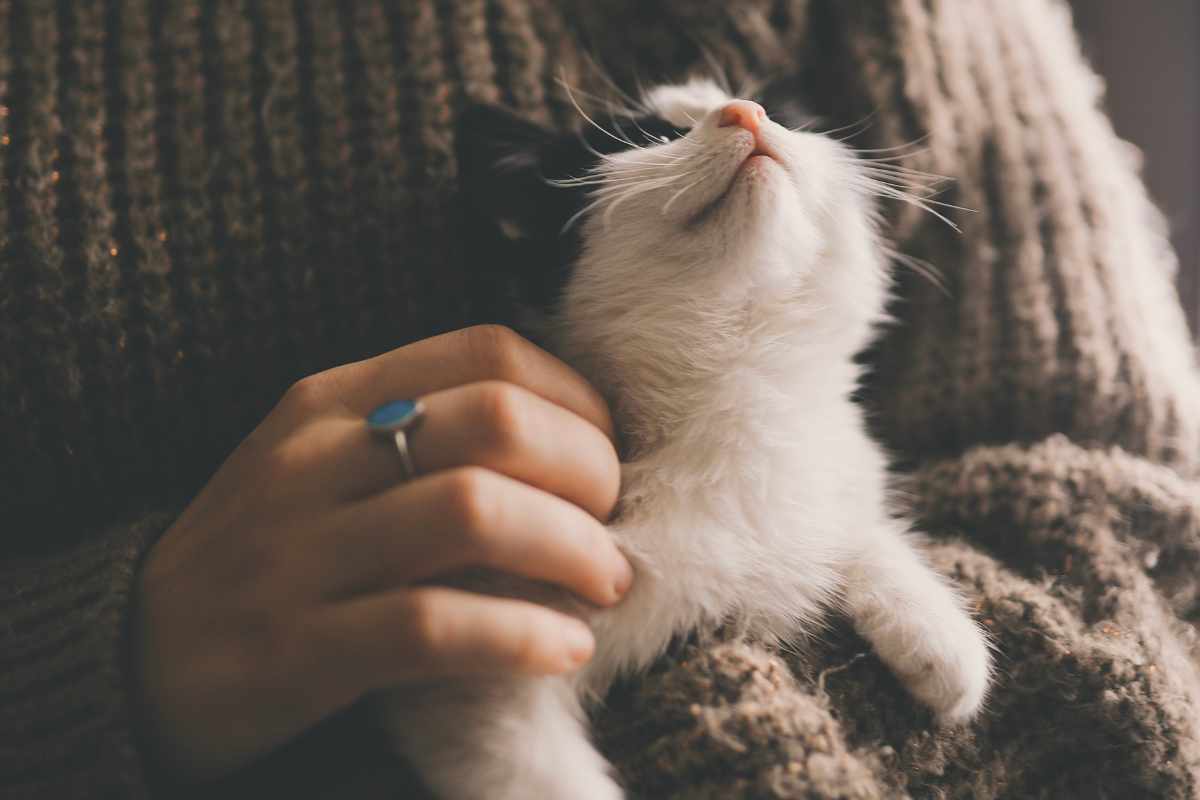Mindful Moments - Strengthening Bonds with Your Pet through Mindfulness

As pet owners, we often feel a deep connection with our furry friends. Yet, amidst the hustle and bustle of daily life, it’s easy to overlook the importance of truly being present with them.
Mindfulness is more than just a practice for humans; it can also play a significant role in strengthening the bond you share with your pet.
By adopting mindful moments into your routine, you can create a deeper connection, enhance communication, and enrich the lives of both you and your pet.
The Essence of Mindfulness
Mindfulness involves paying full attention to the present moment without judgment. It’s about being aware of your surroundings, emotions, and sensations, while letting go of distractions and worries.
When we apply mindfulness in our interactions with pets, we shift our focus from multitasking or rushing through tasks to being fully immersed in the experience.
Whether it's during playtime, walks, or even a quiet moment on the couch, mindfulness helps us connect with our pets in a more meaningful way.
This practice encourages us to observe our pets’ behavior and body language with an open mind. For example, when you’re sitting together, notice how your pet reacts to the world around them.
Are they relaxed, or are they more energetic today? These moments of awareness help you understand your pet’s mood and needs, fostering a deeper emotional bond.

Bringing Mindfulness into Daily Routines
One of the most effective ways to strengthen your relationship with your pet is by incorporating mindfulness into your daily routine. It doesn’t require a lot of time or effort, but it can make a big difference.
Here are some simple ways to bring mindfulness into your day-to-day activities:
Sharing Calm and Quiet Moments
Start by setting aside moments of peace where both you and your pet can relax together. It could be as simple as lying on the couch, petting your dog, or cuddling with your cat.
During this time, focus on the connection between you and your pet. Pay attention to their breathing, the way their fur feels under your hand, and the warmth they bring.
This practice of shared stillness calms both you and your pet and strengthens your emotional connection.
Mindful Play
Playtime is an opportunity for joy and bonding, but it can also be a chance to practice mindfulness. Instead of rushing through the session, take the time to focus entirely on your pet.
Whether it’s a game of fetch, a tug-of-war session, or watching them chase a ball, be present in the moment. Observe their reactions and delight in their excitement.
The more you pay attention to their responses, the better you will be able to understand their needs and desires.
Walking with Purpose
Daily walks are not just for exercise but also for connection. When walking your pet, practice being fully present. Leave your phone in your pocket and focus on the world around you.
Listen to the sounds of nature, feel the wind against your skin, and notice how your pet reacts to their surroundings.
Whether they are sniffing around or enjoying the sunshine, walking together with mindfulness helps both you and your pet to enjoy the present moment.

Understanding Your Pet Through Mindful Observation
Pets communicate primarily through body language, and mindfulness can enhance your ability to understand them.
By paying closer attention to the subtle cues they provide, you can become more attuned to their needs.
Recognizing Subtle Signals
Your pet may not always vocalize their feelings, but they communicate in other ways. A wagging tail, flattened ears, or an excited posture all offer insights into their emotional state.
Through mindfulness, you can tune into these signs and respond accordingly. For instance, if your pet seems anxious, offering them a calm environment or gentle touch can provide reassurance.
Mindful observation allows you to create a safe, supportive space for your pet, improving your communication and deepening the bond.
Promoting Emotional Well-being
Mindfulness helps both you and your pet remain in the present moment, which can reduce stress and anxiety. By observing your pet’s body language and adjusting your behavior accordingly, you create an environment where your pet feels understood and secure.
Whether it’s through quiet time together, mindful petting, or offering them comfort during stressful situations, mindfulness fosters a sense of safety and trust.

The Benefits of Mindfulness for Your Pet
Incorporating mindfulness into your pet’s life can have lasting benefits. Just like humans, pets can experience stress, anxiety, and emotional turmoil.
By being mindful of their needs and responding with empathy, you contribute to their overall well-being. Here are a few key benefits that both you and your pet can enjoy:
Deeper Emotional Connection
Mindfulness strengthens the emotional bond between you and your pet. By sharing moments of calm, play, and presence, you nurture a relationship based on trust and understanding.
This leads to a more fulfilling and harmonious partnership, where both you and your pet feel secure and valued.
Reduced Anxiety and Stress
Pets, like humans, can suffer from anxiety, whether due to separation, loud noises, or new environments. Practicing mindfulness helps you stay attuned to their emotional state, allowing you to offer support when needed.
For example, if your pet feels anxious during a storm, being present with them and offering gentle reassurance can alleviate their discomfort.
Improved Communication
Mindful moments provide the perfect opportunity to improve communication with your pet. As you become more aware of their behavior, you’ll learn to respond in a way that promotes positive interactions.
Whether it’s through adjusting your tone, offering a treat, or simply providing a comforting touch, mindfulness helps foster a deeper level of understanding between you and your pet.

Integrating Mindfulness into Pet Training
Training your pet requires patience, consistency, and mindfulness. Instead of rushing through commands or expecting immediate results, take the time to engage with your pet thoughtfully.
Use positive reinforcement and observe how your pet responds to different cues.
By practicing mindfulness, you can create a training environment that encourages learning through mutual respect and understanding.
Creating a Mindful Environment at Home
To support your pet’s well-being, it’s important to create a mindful environment at home.
This includes providing a space where your pet feels comfortable, safe, and relaxed. Designating a cozy corner for your pet to rest, using calming scents like lavender, or providing soothing music can all contribute to their sense of peace.
Additionally, establishing routines that incorporate mindfulness can help your pet feel more secure.
Regular feeding times, walks, and play sessions create a predictable schedule that your pet can rely on, reducing anxiety and promoting a sense of stability.
By embracing mindfulness, you can transform the way you interact with your pet and create a deeper, more meaningful bond. These mindful moments help foster emotional well-being for both you and your pet, strengthening the relationship and improving communication.
Whether it’s through shared stillness, mindful play, or simply being present during your daily routines, practicing mindfulness enhances the quality of the time you spend together.
Did you find this post useful or inspiring? Save THIS PIN to your PETS Board on Pinterest!


You may also like